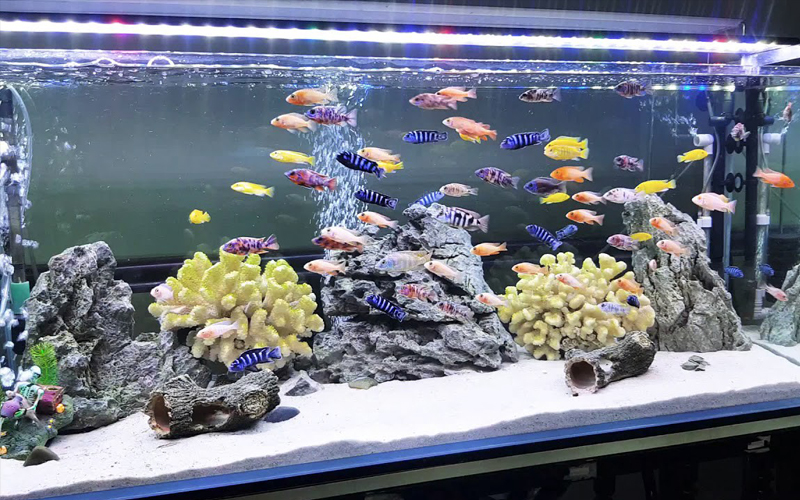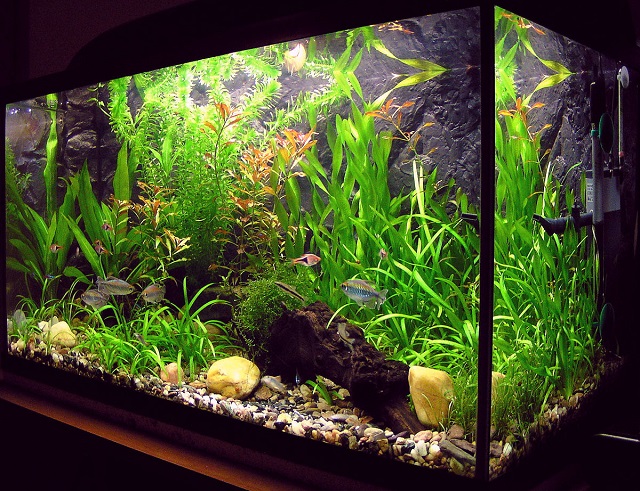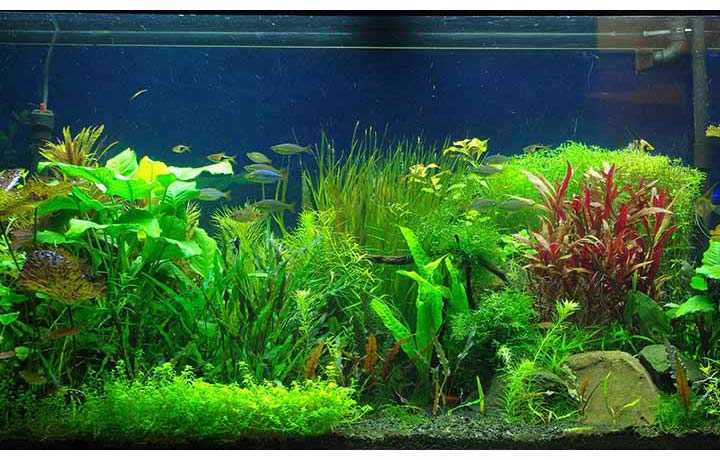THE BEST WATER MANUAL FOR KEEPING ANIMAL FISHES

Everyone knows that fish live on water. Water is an extremely important factor for the life of ornamental fish, and water quality is not the same in all regions; Even the taste is different. Meanwhile, most ornamental fish are very sensitive to the smell and taste of water. Therefore, if raised in a good water environment, the fish's health is good. On the contrary, if the water is not suitable, the fish will find it difficult to live and die.
In other words, freshwater fish are suitable for freshwater, brackish water fish are only suitable for brackish water sources...
Choosing the right water source for fish, also have to worry about filtering so that the water is clean and unpolluted to use. On the other hand, the water in the aquarium also requires an adequate amount of dissolved oxygen, a pH that ensures the growth requirements of fish, and an appropriate temperature.
Water for ornamental aquariums can be used with rain water, tap water, well water and even water from lakes, rivers, streams, as long as it is hygienic.
♦ Rainwater: Rainwater that has just been collected, or stored in a jar, for a long time is considered the best type of water for raising ornamental fish. If stored in a jar, it must be covered to avoid dust, and at the same time, to prevent mice and rats from falling in.
♦ Tap water: The tap water for ornamental fish farming is not inferior to rain water, which is considered to be both clean and sterile. However, it is not recommended to use fresh tap water to raise ornamental fish, but to store it for a few days for the chlorine concentration to dissolve completely to keep the fish alive. The amount of disinfectant in tap water is very small, harmless to humans, but harmful to fish, can cause fish death. Nowadays, tap water is considered as the main source of water for raising ornamental fish, especially in urban areas. It is understandable that tap water is always available and cheap.
♦ Well water: Well water used to raise ornamental fish is also good. Wells that have fresh and clear water for people to eat and drink are very good for raising fish. It is best to draw well water and pour it into the jar for a few days to let the water settle down and then pump it into the aquarium.
♦ Water of lakes, rivers, streams: If the water is not stagnant, unpolluted, and has a clean appropriate pH, it can still be put into aquariums to raise ornamental fish. However, it is best to let it be deposited and carefully filtered before it can be used.
If raising ornamental fish in small quantities, raised in small lakes, the water problem is not very important, but if raising fish in large quantities for business, the water is a concern. Often these places have large lakes to store clean water, so that when used, it is available in large quantities.
1. Change aquarium water

Depending on the size of the large or small aquarium, depending on the density of ornamental fish in the lake high or low, the water in the aquarium is long or dirty. If the lake is small, but the fish is raised a lot, the water is quickly polluted. Dirty lake water is caused by fish waste, due to the leftovers of fish left in the lake, making the water murky, even smelly. Living in such a polluted water environment, the fish will gradually become exhausted and die, so we have to change the water into the aquarium. In case the lake is too dirty, we also have to combine the change of dirty water with clean water with cleaning the lake, scrubbing the bottom of the lake, the lake wall to be clean.
Even if there is a water filter, it does not guarantee the aquarium to have clean water for a long time. The filter only partially supports, helping the lake water to be less dirty. So is the siphon tube. That said, it's still better to have a filter and a seal.
2. Time to change water
The time to change the old water in the lake with new water is long or short, depending on the degree of pollution of the water in the lake more or less. However, even if the lake water has a purification system, it must be changed every few months at most. It is not advisable to let the aquarium get really dirty instead, because this is inadvertently harming the health of the farmed fish and reducing the beauty of the aquarium. The aquarium is a decoration for the living room, but if the water is too dirty, what else can be attractive?
There are many ways to make the lake less polluted:

♦ Using a filter system: Thanks to the water purifier in the lake, the pollution will be reduced. The impurities that the fish release every day and the leftovers are removed by the filter.
♦ Use a siphon tube: Use a siphon tube to scan the bottom of the lake to find and suck out the dirt. At any time of the day, whenever I see something dirty, I immediately pull it out. Thanks to that, the water in the lake is always clear and clean.
If diligent, every few days, change from 10 to 20 percent of the water in the lake once, the water will also be dirty for a long time. If this method is used according to the same cycle, then changing the water every three weeks will not harm the health of the fish.
In the case of not following the above methods, the lake water will quickly become dirty. If the density of ornamental fish in the aquarium is high, it may be necessary to change the water every week. Even though the new water has been settled for a few days, each change should leave three-quarters of the water in the tank. In other words, each time we change the water, we use a siphon to draw out about a quarter of the dirty water, then pump new water in to fill the pool again. It is also necessary that between the new water and the old water in the lake, there must be an equal pH and temperature to meet the requirements, the difference of the allowed temperature is only about one - two degrees.
3. How to change the water
As mentioned above, every time we need to change the water in the tank, even if it's only a small part or all, we try to avoid fear of the fish. It is best not to use a racket to pick up all the farmed fish out, wait until the new water is pumped into the lake, and once again pick up the fish and put them back into the lake. Such “brutal” movement of fish, in addition to scaring the fish, can also cause the fish to have microscopic injuries, scales or tails. When the fish is scared, it keeps ... ducking its head and running like a ghost chasing, so it can't avoid the beak (caused by hitting the glass wall of the lake), the tail is torn (this is common in fishing boats). That's not to mention being too scared, ornamental fish can jump out of the lake, not dead, also scratched and flaked, no longer worth anything.
The best way to change the water for the tank is to let the fish live naturally, and then use a hose to sweep across the surface of the tank to remove about sixty-seventy percent of the old water in the tank. No matter where the water recedes, the fish just swim around in the rest of the lake, almost unaware of something strange going on in their habitat. Then we slowly pump new water to full again.
Water changes should be done when it is warm and sunny outside. In times of heavy rain and wind, the outside climate changes too abnormally, we should not change the lake water, unless the water is too dirty, and the cultured fish are being poisoned by this dirty water.
Again, only when the water in the lake is too dirty, even has an unpleasant smell, and the bottom and walls of the lake are covered with moss due to not being cleaned for a long time, then we will think about using a racket to pick up all the farmed fish out. It is easy to clean the lake, then change the water completely into the lake.